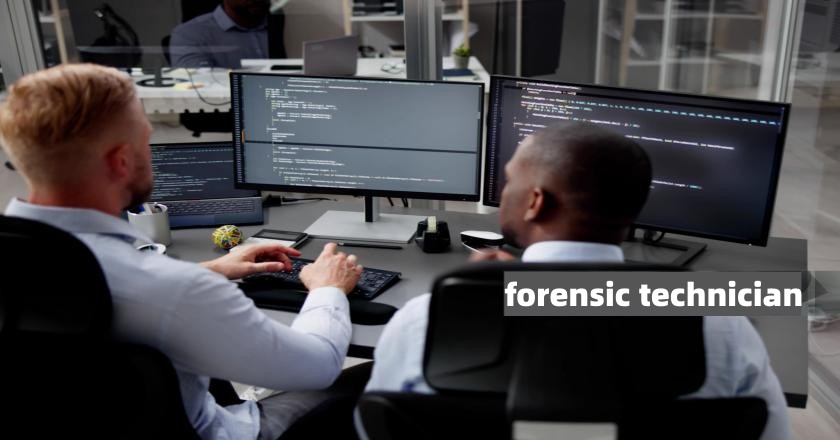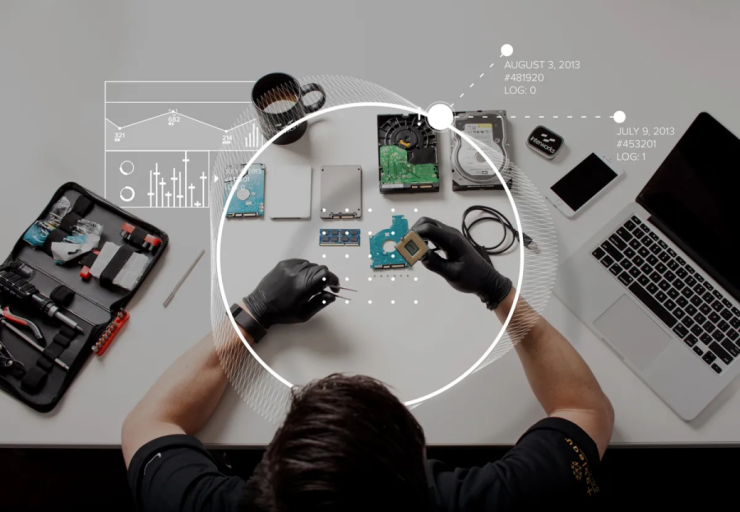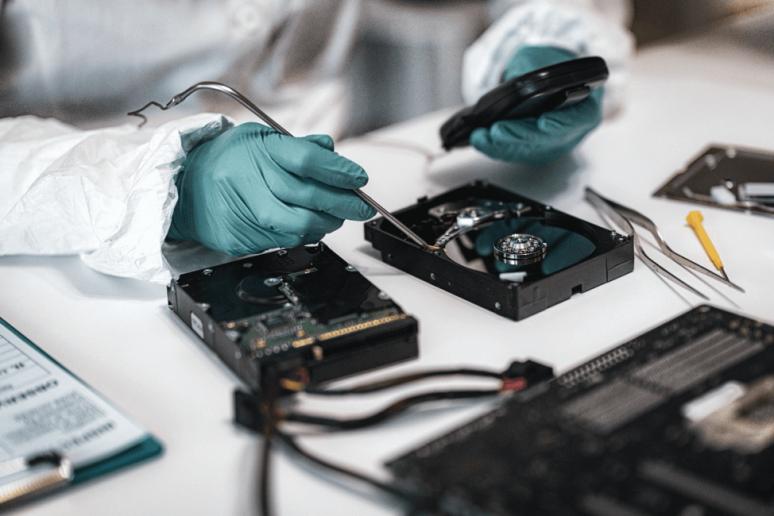What is a forensic technician in the rigorous realm of forensic investigations? These experts are in charge of gathering, safeguarding, and evaluating evidence from crime scenes, placing them at the forefront of the legal system. Their job is to make sure that every evidence, no matter how little or intricate like a hair follicle or digital data is handled with the highest integrity. When working with the actual evidence left at crime scenes for the first time, you need to be very careful and have a strong moral commitment to justice. As we learn more, it becomes clear that a forensic technician’s skills are very important for connecting the crime scene to the trial.
Become a Skilled Forensic Technician: Essential Insights

-
Content
- Types of Digital Forensic Evidence
- Collection Techniques
- Packaging and Preservation
- Handling Digital Evidence
- Security Measures in the Lab
- How to Become a Digital Forensic Technician
- Conclusion
-
Content
- Types of Digital Forensic Evidence
- Collection Techniques
- Packaging and Preservation
- Handling Digital Evidence
- Security Measures in the Lab
- How to Become a Digital Forensic Technician
- Conclusion
Types of Digital Forensic Evidence
1. Physical Evidence: The Tangible Truths
Physical evidence is anything that can be touched and is found at the crime scene. This can be anything from clothes fibers and glass pieces to weapons and papers. Because this kind of evidence can be touched, it is very important for forensic experts to keep it intact from the moment it is found. Physical evidence can say loudly during a trial because it is carefully recorded and kept. It is often used to recreate the crime scene for the jury.
2. Digital Evidence: The New Frontier
With the progress of technology, digital proof is becoming more common these days. This includes information from computers, tablets, and other electronics that can tell police a lot about what the person did and where they were. In this area, forensic techs’ job is to get the data out and keep it safe from being changed or lost. To properly understand and show digital proof in court, you need both standard forensic knowledge and tech-savvy skills.
The fact that forensic techs work with a wide range of evidence types shows how important they are to the court system. For each type, a different method is needed to make sure that the truth is found and can stand up to the scrutiny of the court process.
Collection Techniques
1. Photography and Sketching: Capturing the Scene
One of the first things that police do at a crime scene is take thorough pictures and sketches. In this way, a visible record is made of the exact location and state of the proof before it is gathered. To make sure they catch every detail, forensic techs use high-resolution cameras and sometimes drones to take pictures from above and up close.
2. Bagging and Tagging: Secure Storage
The evidence is carefully bagged, tagged, and recorded after it is found. This method makes sure that every item can be named and tracked throughout the investigation and trial, keeping the chain of custody clear.When done correctly by trained forensic experts, these methods are essential for getting solid proof that can stand up in court.
Packaging and Preservation
1. Digital Devices: Shielding from Electromagnetic Interference
It’s important to keep digital proof like phones, computers, and apps exactly as it was found when working with it. Forensic lab workers use faraday bags to keep these devices from picking up outside signals. This keeps them from being erased or changed remotely. After being safely stored, digital evidence is carefully recorded and sent to a lab so that forensic experts can recover data in a controlled environment. This careful attention makes sure that digital proof doesn’t get changed, so investigators can use it with confidence.
2. Physical Evidence: Customized Containers
Things that are physical, like guns, clothes, or pieces of glass, need to be packed in special ways. Sharp objects can be kept safe in stiff tube cases so they don’t get pierced, and delicate fabrics are often put in paper bags so they can breathe and avoid mold or other damage from wetness. Forensic lab techs are very important to this process because they use their knowledge to make sure that each item is packed properly so that it doesn’t break down or get contaminated.
Forensic lab workers make sure that every piece of evidence stays valuable as a key piece in the investigation by following these specific packing and storage methods. Forensic proof can stand up to the strict scrutiny of the law because of this careful attention to detail. This protects the truth and allows justice to be done.
Handling Digital Evidence
Today in forensics, digital evidence is very important for investigations. This includes everything from simple text messages to complicated cloud data. There are five very careful steps that forensic techs must take when working with this kind of evidence: identification, collection, preservation, documentation, and analysis. Each step is important to make sure that digital artifacts are legal and technically sound.
1. Identification: The First Line of Inquiry
The selection step is very important. Forensic techs have to be very good at figuring out which digital gadgets or data can help with an investigation. To do this, the crime scene must be searched for computers, smartphones, external hard drives, and even Internet of Things (IoT) devices like smart watches and home helpers. The goal is to get a good idea of what digital proof is out there and how it might be useful for the case.
2. Collection: Secure Acquisition
Once someone has been found, it is very important to collect digital proof safely. This process of making exact bit-by-bit copies of data from devices by technicians is called forensic imaging. This makes sure that the original data doesn’t get changed, which keeps the evidence’s purity. Carefully keeping track of all the steps taken during this part helps keep the chain of control clear.
3. Preservation: Guarding Data Integrity
To preserve digital proof, you have to keep it from being changed, damaged, or lost. Data is kept on safe, write-protected devices and in controlled settings to keep it safe from electromagnetic interference and physical harm. Making sure that data is correct is very important because even small mistakes can make proof invalid.
4. Documentation: Detailed Record Keeping
Documentation is a detailed record of everything that was done with the digital proof, such as how it was identified, collected, and kept safe. This paperwork is very important for court procedures because it leaves a clear trail that shows the evidence was handled in an honest and correct way.
5. Analysis: Unveiling Digital Truths
The final step is analysis, where forensic technicians and analysts work to extract and interpret data. They find important data like timestamps, details about when files were created, and contact records by using both automatic and human methods. During this part, the who, what, when, and how of digital exchanges that are connected to the case are often made clear.
Forensic techs follow these five steps to make sure that digital evidence is not only stored and recorded correctly, but also carefully studied. This gives them valuable information that helps them solve difficult cases. In the digital age, where electronic data is often the key to important parts of studies, this methodical technique is very important.
Security Measures in the Lab
When it comes to digital forensics, the lab is just as important as the crime scene. Forensic techs must use strict security methods to keep the proof they work with safe. These steps include following strict lab practices and keeping controlled settings that only certain people can get into.
1. Laboratory Protocols: Standardizing Safety and Accuracy
Laboratory methods are carefully thought out to make sure that evidence is handled and stored in the same way every time. These rules say everything, from the dfir tools that should be used to look at different kinds of proof to how to get rid of chemical waste. They also have thorough instructions on how to clean work areas so that proof isn’t harmed by cross-contamination. By following these rules, forensic techs make sure that every piece of evidence is handled with the greatest care and accuracy, keeping it useful for legal and criminal purposes.
2. Controlled Environments: The Shield Against Contamination
There are special features in the lab that keep outside forces from changing the data. Entry is limited to authorized people only, and all places of access are watched over by security systems and logs. This limited access not only lowers the chance of people dealing or stealing private information or proof without permission, but it also makes the building safer overall. The forensic lab is fortified with these security measures, allowing evidence analysis and storage under ideal circumstances. This thorough process assures that this evidence’s results are credible and solid enough for legal examination.
How to Become a Digital Forensic Technician
To become a digital forensic technician, A digital forensic technician must master a diverse set of skills to excel in their field. Aspiring technicians must overcome several obstacles to succeed in this vital criminal justice profession.
1. Skills to Master: A Diverse Toolkit
- Technical and analytical skills are paramount, enabling them to proficiently use forensic software and analyze complex data.
- Familiarity with networking concepts and IT skills, including knowledge of operating systems, databases, and programming languages, are essential for thorough investigations.
- Strong communication skills are crucial for conveying technical information to non-technical stakeholders and documenting findings effectively. Additionally, attention to detail, patience, and problem-solving skills are vital for examining digital evidence meticulously and resolving complex issues.
- A solid educational background in fields such as computer science, cybersecurity, or information technology provides the necessary foundation for this career.
2. Challenges in Evidence Handling: Navigating Complexities
- When addressing high-profile cases, forensic experts typically operate under pressure. Maintaining the chain of custody is crucial to avoiding judicial objections to evidence admission. Another problem is keeping up with quick technological advances and contemporary forensic methodologies, since managing modern digital evidence requires being current.
- A lot of people who want to be technicians ask, how to become a forensic technician?” To get this job, you need to get the right schooling, like a degree in forensic science or a similar area, and then you need to get hands-on experience through internships or entry-level jobs.The forensic technician salaryrepresents the unique skills and important duties that come with the job.
- Additionally, roles such as a forensic evidence technicianand forensic lab technician require specific expertise in handling and analyzing various types of evidence under controlled conditions. Advanced certifications and continuous professional development are crucial for career advancement in this field.
- Forensic technicians must constantly learn and adapt. Successful forensic scientists are resilient, willing to learn, and dedicated to sustaining the standards.
Conclusion
Forensic technicians are essential to justice. These experts protect legal truth by meticulously collecting, preserving, and analyzing evidence. Forensic technicians use specific expertise and strict rules to handle physical, biological, and digital evidence with integrity. In the lab, a forensic lab technician ensures that every sample, from blood to digital devices, is processed under the strictest standards to maintain its validity. A digital forensic investigator focuses on uncovering crucial digital evidence, from emails to complex data logs, that can provide insights into criminal activities. Forensic technicians protect vital evidence and defend justice by ensuring that each piece of evidence tells its narrative in the search for truth. Their fundamental function ensures that no detail is neglected in complicated forensic investigations.




